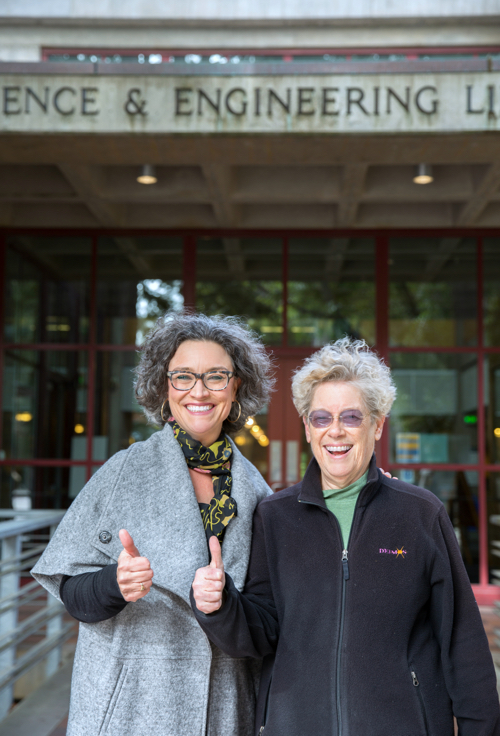The transformation of the Science and Engineering Library will start later this year using a $5 million grant to kickstart the initiative.
“The library—a repository of knowledge—remains fundamental to the mission of our university, yet it must evolve to meet the needs of today’s world of inquiry,” Chancellor George Blumenthal said. “This grant helps to launch an important reimagining of our Science and Engineering Library that will ensure its central place in our campus for the decades to come.”
The re-envisioning of the Science and Engineering Library will be completed in phases, starting with the top floor. The grant, from a foundation that wished to remain anonymous, will transform the physical experience of that space in ways that will support and inspire students.
The top floor of the Science and Engineering Library will be named in honor of Sandra M. Faber, professor emerita of astronomy and astrophysics at UC Santa Cruz. Faber’s work has helped establish many of the foundational principles underlying the modern understanding of the universe on the largest scales.
Faber, who received the National Medal of Science in 2013, is renowned for her contributions to the understanding of dark matter, galaxy formation, and the large-scale structure of the universe.
“It is a wonderful honor to be remembered in a project that will help the campus in so many ways. Science Hill has long needed a social focal point where students and faculty can gather,” Faber said.
“With this long-term vision in mind, I am sure that putting food, scholarly resources, and bright people together into one of our architectural gems will spark new learning and exciting new initiatives.”
The Science and Engineering Library opened in 1991. Since then, the size of campus and the science and engineering community has more than doubled. The library, as it is currently configured, is not optimized to serve the needs of 21st-century researchers and learners.
“The Science and Engineering Library we envision for the 21st century is both a research hub and a center for student success,” said Elizabeth Cowell, the Richard L. Press University Librarian, Presidential Chair. “We are building a library for and around a supportive community of our growing diverse student population. We are not just refurbishing a 25 year old building.”
“Our library will be holistic and proactive,” Cowell said, “with infrastructure and services that aim to connect people and ideas from all backgrounds.”
The Science & Engineering Library Advisory Task Force, charged by Campus Provost and Executive Vice Chancellor Marlene Tromp and University Librarian Cowell, is expected to offer recommendations by the end of winter quarter on how the Science and Engineering Library can best support student success in science, technology, engineering and mathematics.
The renovation, which will be donor-funded, aims to expand the library’s capacity to provide support for more students and faculty.
Like with the McHenry Library renovation in 2011, the campus also plans to add a cafe in the Science and Engineering Library’s lower level and increase the number of group study rooms available for reservation.



